Gravitational waves are a hot topic these days. The detection process is easily reminiscent of the process of human discovery of electromagnetic waves. In 1887, 129 years ago, the 30-year-old Hertz confirmed the existence of electromagnetic waves, which also means that Maxwell's theory has won. Since then, a new peak in physics, the electromagnetic theory, has been established.
Since 129 years, based on seemingly imaginary electromagnetic waves, people have developed and applied wireless communication, which has completely changed the way human communication and communication; now, mobile is playing its magical power, connecting everything, and further triggering the fourth industrial revolution era. advent. Pay tribute to the great man and pay tribute to science.
The above content is what we thought about our MWC in Barcelona, ​​Spain in 2016. What we "see" is that hard-working technology companies are pushing wireless communications to "higher efficiency, higher speed, and smarter." Yes, your mobile phone network speed may reach 1Gbps this year, which is 10 times that of the first generation LTE terminal; in addition, it will probably have the same thinking ability as your robot and drone, and "fall in love" Learning"; Of course, your car, home, audio has become or is becoming a node of the mobile Internet, and will have good interoperability, that is, "speak the same language."
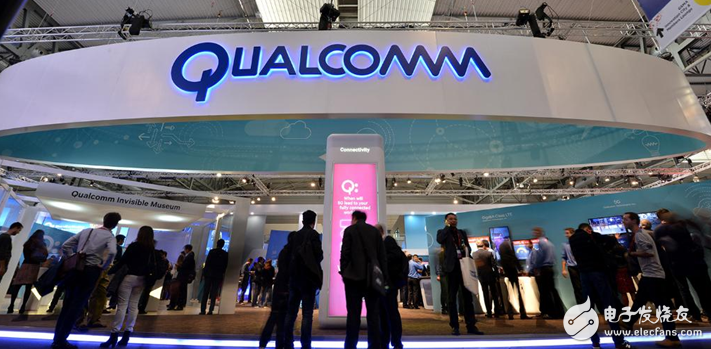
(The Qualcomm booth where people are shaking)
The future of connectivity technology: 5G and LTE-Advanced Pro
The core of mobility is connectivity technology, and the future of 5G and LTE-Advanced Pro as connectivity technologies is redefining mobile networks. 5G continues to be one of the hot spots of this MWC without any surprise. From the initial 1G/2G voice network to the evolution of 3G/4G LTE high-speed data networks, mobile communications has promoted the development of mobile Internet and led the era of smart phones. Now, we are moving towards 5G, a new mobile network is about to emerge, it will connect new industries, spawn new services, and bring a new user experience to meet the growing demand for connectivity from now to the future.
At the GTI Summit held during MWC, China Mobile joined forces with Qualcomm, Ericsson, Huawei, Nokia, ZTE, Datang, Intel, Keysight, Haier, Hisense and Beijing Shougang Automation Information Technology Co., Ltd. to officially launch the 5G Joint Innovation Center. Li Zhengmao, vice president of China Mobile, said: "In the face of future 5G development, the traditional communications industry and vertical industry should be transformed from single-domain innovation to cross-domain collaborative innovation, thereby jointly expanding 5G new markets, tapping new applications, and welcoming 5G. Business opportunities.†Qualcomm CEO Steve Morenkov said that 5G is connecting new industries and creating new user experiences through a unified platform. He also said that Qualcomm's innovative technology is driving the creation of a more powerful unified 5G platform.
In fact, Qualcomm has been working in the 5G field for many years. Since 2006, it has been conducting forward-looking research and development on 5G, and has cooperated with the industry to promote the 5G standard process and participate in important 5G demonstrations and tests. During MWC, Qualcomm and Ericsson announced that they will cooperate on 5G technology development, early interoperability testing, and coordination with mobile operators for established projects. The two companies will participate in the early testing and validation of 5G key technology components to support the technical work required for standardization of the 3GPP Release 15 specification.
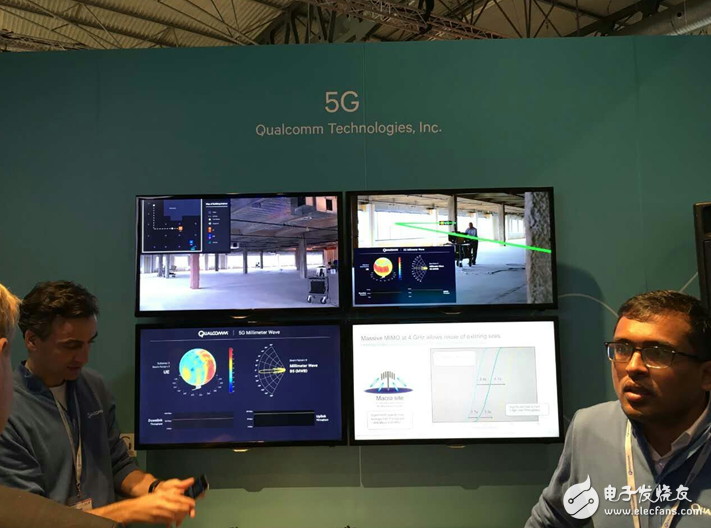
(Qualcomm demonstrates 5G technology)
At present, Qualcomm is also leading the 5G development path with partners through LTE-Advanced Pro. In general, the LTE Advanced Pro named by the 3GPP Release 13 specification marks the next important stage of 4G, extending the technology to a new application and usage model, laying the foundation for a unified and more powerful connection platform for the next decade. On the eve of MWC, Qualcomm introduced the mobile industry's first Gigabit LTE modem, the first commercial LTE Advanced Pro modem in the mobile industry, supporting downlink carrier aggregation and 256-QAM up to 4x20MHz across FDD and TDD spectrum. Brings "like fiber" up to 1Gbps LTE Category 16 download speed; it also supports up to 150Mbps upstream speed by supporting up to 2x20MHz uplink carrier aggregation and 64-QAM. The industry generally believes that the Xiaolong X16 not only blurs the boundaries between wired and wireless broadband, but also represents an important step towards 5G.
During the MWC, based on the Opteron X16 modem, Qualcomm and Ericsson demonstrated how to achieve download rates of up to 1 Gbps by utilizing three-carrier aggregation, 4x4 MIMO on two aggregated carriers, and higher-order modulation of 256-QAM.
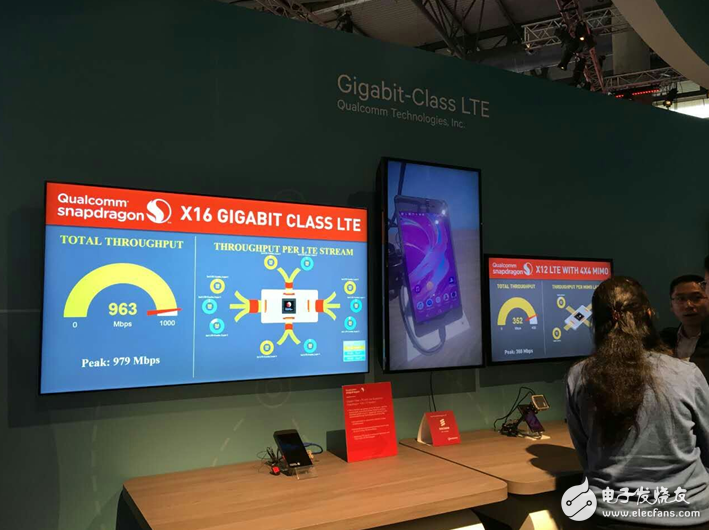
(Qualcomm demonstrates 1Gbps LTE Cat.16)
Also during the MWC, according to media reports, Australian operator Telstra announced that it will launch Cat.16 mobile network with a peak downlink speed of 1Gbps in some regions this year, and the terminal uses the Opteron X16 modem. That is to say, your Snapdragon mobile phone will download 10 times faster than the first generation LTE terminal, or 500 times that of the early 3G terminal.
Of course, LTE-Advanced Pro is definitely not just fast. For example, the Snapdragon X16 modem also supports the global standard "Authorized Auxiliary Access" (LAA) for LTE unlicensed spectrum, thanks to support for LAA and LTE-U, reducing the number of licensed spectrum required - can be reduced to 40MHz or less - will significantly increase the number of operators worldwide that can deploy Gigabit LTE rate networks.
In addition, Qualcomm and Samsung jointly announced that they will cooperate on small base station technologies and products supporting LTE unlicensed spectrum. The unlicensed spectrum LTE includes a series of key technologies that enable the aggregation of authorized and unlicensed bands (eg 5 GHz), which is efficient and Improve network capacity and speed in a timely manner. In addition, Qualcomm brings a number of forward-looking demonstrations at MWC, including Enhanced LAA (eLAA), which introduces licensed and unlicensed spectrum LTE aggregation in the uplink/downlink, and LTE-based, fully operational in the unlicensed spectrum. Technology MulteFire, also unveiled together.
820 "core" machine shines MWC, Xiaolong leads the mobile experience
During the MWC, the Snapdragon 820 like the big star was very busy. Including Xiaomi, LeTV, LG, Samsung, Sony, Hewlett-Packard and other manufacturers to display or release the smart phone using Snapdragon 820, and many manufacturers including vivo also announced the release of Snapdragon 820 mobile phone on different occasions.
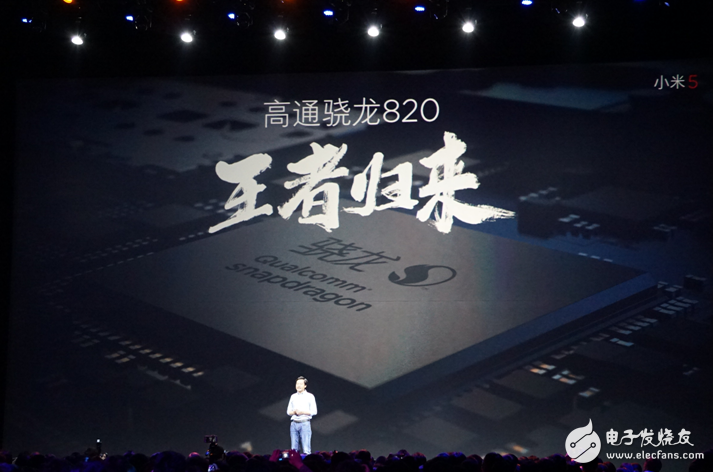
(Millet mobile phone 5 is released in China and Spain in the same period)
The overall design of the Snapdragon 820 provides richer visual effects, higher audio clarity and more intuitive device interaction to make the immersive experience more vivid. In addition, the industry generally believes that the Snapdragon 820's support for the next wave of virtual reality games and experiences is just the right time, it will take the virtual reality experience to a new level. Qualcomm executive vice president and QCT president Cristiano Amon said that VR is very excited about the company. With the launch of the Snapdragon 820, you will see some VR-based use cases. And, with the introduction of the next generation of Opteron processors, a large number of desktop VR usage scenarios will be applied to mobile terminals.
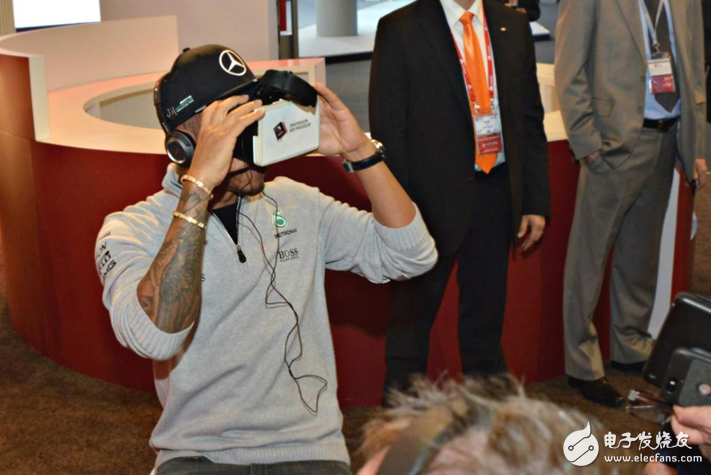
(World Champion F1 driver Lewis Hamilton experiences VR, Snapdragon 820 provides support)
Of course, the above phones also use Qualcomm "high-tech and source power" to enhance the user experience - through the Qualcomm Hexagon DSP supporting Hexagon Vector Extension (HVX), the "always-on" sensor power consumption is one-tenth of the previous generation. The charging speed of mobile phones such as Xiaomi mobile phone 5, Le Max Pro, LG G5, and HP Elite x3 with Quick Charge 3.0 fast charging technology will be greatly improved. Quick Charge 3.0 adopts the best voltage intelligent negotiation for the first time in its class (Intelligent NegoTIaTIon for OpTImum Voltage, INOV) algorithm. INOV is a new algorithm developed by Qualcomm to help portable devices with the ability to select the required power level for optimal power transfer at any time and maximize efficiency; Samsung Galaxy S7 and Galaxy S7 edge with Qualcomm TruSignal Antenna signal enhancement technology can intelligently compensate signal barriers, improve call stability and data transmission speed, network coverage, and reduce power consumption; Xiaomi mobile phone 5 supports 4G+ (three-carrier aggregation), and cooperates with high-order modulation technology to make peak downlink The rate reaches 600Mbps; the LG TONE Platinum Bluetooth headset features the new enhanced audio codec Qualcomm aptX HD. In the past, using wireless to transmit music, the file will always be compressed, which will destroy the sound quality. With aptX HD, you don't need a wired connection, you can provide audio with comparable CD quality through Bluetooth.
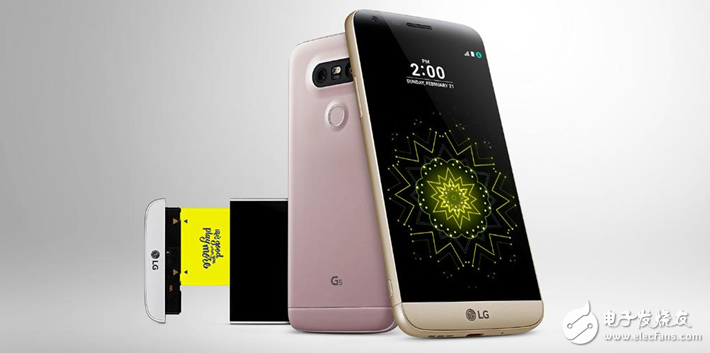
(LG G5, using Snapdragon 820 processor) 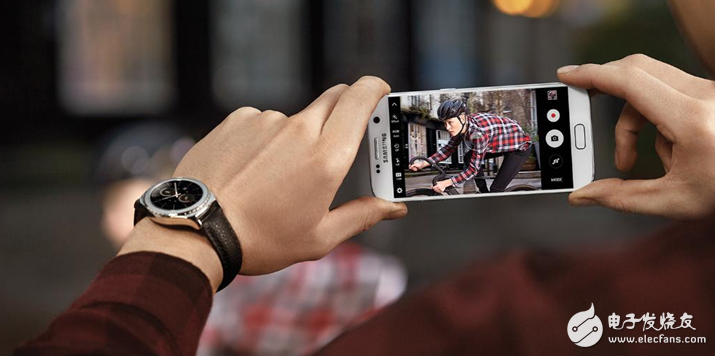
In addition, security is also an important mobile experience. On the eve of MWC, Qualcomm announced the launch of the first secure fingerprint authentication for Tencent WeChat mobile payment service. Users can use this new fingerprint authentication supported by Qualcomm Haven security platform authentication architecture to replace PIN code or password as mobile terminal online transaction. Ways of identifying. The technology is currently shipping in China with the mobile phone vivo X6 supporting Xiaolong Netcom, and will be used in many smartphones in the coming months.
Everything connects: smarter, lower power, always online
Everything is connected to the era of cars, robots, and wearables. Currently, leading companies such as Qualcomm are "spilling" wireless technologies that originally belonged to smartphones to other types of terminals.
Taking the automotive industry as an example, its major changes will lead to tremendous changes in our daily lives, saving us valuable time and money. Qualcomm expects that in the next few years and in the next decade, there will be more and more networking features in the car that support safety features and semi-automatic driving systems. In the end, humans will achieve fully automated driving. At present, the company's automotive solutions are applying Qualcomm's insights from its mobile technology advantages to connected cars. During the conference, Qualcomm President Derek Aboli also discussed with Mercedes AMG Petronas Formula One Team, current F1 World Champion Lewis Hamilton and Mercedes AMG Petrochemicals Executive Director Paddy Laugh how wireless technology will be Transforming the future of consumer cars through motorsport.
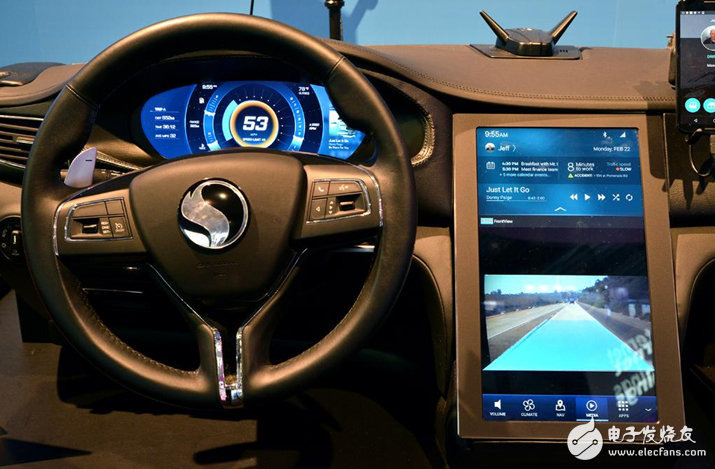
(éªé¾™æ±½è½¦æ–¹æ¡ˆå±•ç¤ºå±•ç¤º)
Regarding drones, Qualcomm had a very interesting and vivid prediction: In the future, the consumer drone market will be as big as the selfie stick market. Earlier, Qualcomm introduced the Snapdragon Flight reference board for consumer drones, helping OEMs reduce design complexity and cost, shorten development time, and introduce smaller, lighter, smarter, longer-lasting battery life to the market. machine. Tencent and Zero Intelligence have jointly adopted the Qualcomm solution for the unmanned aerial vehicle YING.
For wearables, Qualcomm also brought exciting news during MWC – launching the new Qualcomm Snapdragon Wear platform and the first product in the new product line, the Snapdragon Wear 2100 SoC, and further expanding it by adding three new ODMs. The industrial ecosystem of the platform. Borqs International Holdings, Compal Computer and Infomark will provide reference designs based on the Snapdragon Wear 2100 SoC.
During the MWC, two low-power LTE demonstrations also demonstrated 4G connectivity for IoT applications. The first demonstration will show how IoT devices with LTE connectivity can take advantage of the MDM9207-1 modem's power-saving mode (PSM) to achieve up to 10 years of battery life with two 5th batteries. The second demonstration, in collaboration with Ericsson, was a preview of the Extended Idle DRX feature. LTE Extended Idle DRX enables mobile networks and IoT devices to synchronize network wake-up time points, receive network data at extended intervals, and extend battery life.
The above is our observation in MWC, wireless technology has penetrated into our lives, and revolutionized the industry, city, medical, education, automobile, drone, robot and other industries with subversive influence. development of. That's right, "mobile is everything."
Direct Driven Servo Motors,Direct Drive Motor,Ac Motor Integrated Servo,Ac Three Phase Servo Motor
Zhejiang Synmot Electrical Technology Co., Ltd , https://www.synmot-electrical.com